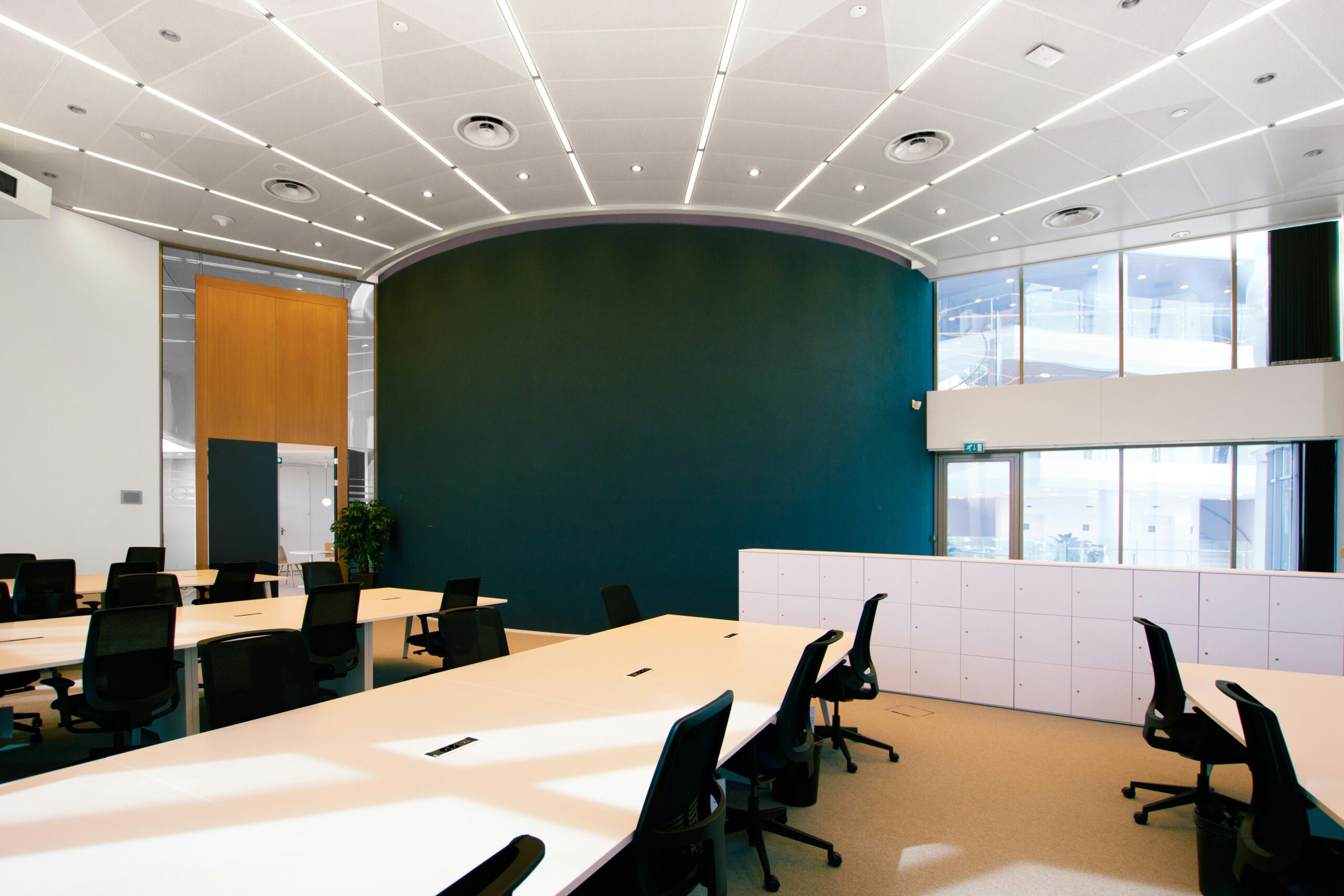In the world of interior design and building material innovation, one phrase is making a quiet yet profound impact: sustainable Acoustic Panels. These modern materials do more than absorb sound — they champion health, wellness, and environmental responsibility. As we seek to create spaces that are not only functional but also nurturing, Acoustic Panels designed with sustainability in mind are stepping into the spotlight.
This isn’t a fleeting design trend; it’s a necessary shift in how we build and experience our environments. With rising concerns over indoor pollution, stress levels, and environmental degradation, integrating Acoustic Panels that are both effective and eco-conscious is no longer optional — it’s essential.
The Quiet Problem with Noise
Noise pollution isn’t limited to busy streets or crowded restaurants. It’s a persistent issue in homes, offices, hospitals, schools, and other indoor settings. Constant exposure to unwanted noise can lead to a host of problems — from reduced productivity and concentration to increased anxiety, poor sleep, and even cardiovascular issues.
But sound control is more than just a comfort feature. When managed properly through materials like Acoustic Panels, it becomes a critical component of a healthier indoor ecosystem.
Understanding the Role of Acoustic Panels
Before diving into sustainability, it’s important to understand what Acoustic Panels are and how they function. Acoustic Panels are sound-absorbing panels used to reduce noise, control sound reverberations, and enhance clarity within a space. Traditionally used in concert halls and recording studios, they are now becoming a staple in offices, educational institutions, healthcare facilities, and even homes due to the increasing need for quiet, productive, and comfortable environments.
Common Types of Acoustic Panels:
- Wall-mounted panels
- Ceiling clouds and baffles
- Desk dividers
- Freestanding screens
Each of these has a specific role in improving acoustic performance based on space requirements. But as demand rises, so does the environmental impact—especially with conventional materials often made from synthetic, non-recyclable, or VOC-emitting substances. This is why the shift towards sustainable alternatives is not just important, but essential.
What Makes an Acoustic Panel Sustainable?

Acoustic Panels are designed with the planet and people in mind. They integrate eco-friendly materials, energy-efficient manufacturing processes, and lifecycle benefits that contribute to a circular economy. Key features include:
1. Recycled and Renewable Materials
One of the primary features of Acoustic Panels is the use of recycled or rapidly renewable resources. For instance:
- Panels made from recycled PET (polyethylene terephthalate) significantly reduce plastic waste.
- Natural fibers like hemp, wool, or jute offer excellent acoustic properties while being biodegradable.
- Panels crafted from wood wool, or cork not only absorb sound efficiently but also have a low carbon footprint.
2. Low-VOC Emissions
Indoor air quality is compromised by the release of Volatile Organic Compounds (VOCs) from building materials. Sustainable Acoustic Panels are designed to emit little or no VOCs, ensuring better air quality and healthier breathing environments.
3. Durability and Longevity
High-quality sustainable panels are built to last. This minimizes the need for frequent replacements, thus reducing waste over time. Longevity also ensures that the acoustic performance remains consistent for years, offering long-term value.
4. End-of-Life Recyclability
A true sustainable product considers its end-of-life. Many Acoustic Panels are now designed to be recyclable or compostable, which reduces landfill burden and encourages responsible disposal.
Health Benefits of Sustainable Acoustic Panels
The importance of acoustic comfort in supporting mental and physical well-being cannot be overstated. Here’s how Sustainable Acoustic Panels contribute to healthier indoor spaces:
1. Reduction in Noise Pollution
Excessive noise can lead to stress, fatigue, and even cardiovascular issues. By effectively absorbing sound, Acoustic Panels reduce background noise, improve speech intelligibility, and create a calming ambiance.
2. Enhanced Productivity and Focus
In workplaces and educational settings, poor acoustics can cause distractions and reduce performance. Properly installed Sustainable Acoustic Panels help minimize echoes and disruptions, boosting concentration and output.
3. Better Sleep and Recovery
In healthcare and hospitality environments, controlling sound is critical. Patients recover faster in quieter surroundings, and guests enjoy better sleep quality. Natural material-based Acoustic Panels can make these spaces more restful and restorative.
4. Improved Indoor Air Quality
With low-VOC construction, sustainable panels prevent indoor air from being contaminated by harmful off-gassing. This is especially crucial in schools, hospitals, and homes with children or elderly residents.
Elevating Wellness Through Design
Wellness-driven design is no longer a niche concern. The WELL Building Standard, LEED certification, and other global frameworks have made it clear: indoor environments should actively contribute to human health.
Acoustic Panels made with sustainable and biophilic principles enhance this goal by not only minimizing noise but also supporting psychological comfort. With natural textures, earthy colors, and organic compositions, they help mimic nature’s calming presence — a concept known as biophilic design. This has been shown to reduce stress, improve focus, and elevate mood.
Innovative Features in Modern Acoustic Panels
Designers and manufacturers are going beyond functionality to integrate smart and aesthetic features into Sustainable Acoustic Panels, including:
- Customizable aesthetics: Panels can now be printed, dyed, or textured to suit brand identities or interior themes.
- Modular systems: Interchangeable panels for easy upgrades and reconfiguration.
- Acoustic + lighting integration: Hybrid systems that blend sound absorption with LED lighting.
- Thermal insulation: Some natural materials offer both acoustic and thermal comfort.
- Interactive panels: Writable or magnetic surfaces that double as collaborative tools in offices and classrooms.
These innovations ensure that acoustic treatment doesn’t have to compromise design integrity or functionality.
Applications of Sustainable Acoustic Panels
The versatility of Sustainable Acoustic Panels makes them suitable for a wide range of applications:
- Corporate offices: Enhancing focus and confidentiality in open-plan spaces.
- Educational institutes: Supporting learning through improved auditory clarity.
- Healthcare: Promoting calm environments conducive to healing.
- Hospitality: Elevating guest experience in lobbies, rooms, and restaurants.
- Retail stores: Reducing noise clutter to enhance customer comfort.
- Residential spaces: Creating quiet zones for work-from-home setups, reading nooks, or home theaters.
A Green Future for Acoustics
The move towards sustainability is no longer a trend—it is a necessity. As regulatory standards and consumer expectations evolve, the integration of Sustainable Acoustic Panels offers a unique opportunity to enhance indoor environmental quality while meeting green building certifications.
Architects, interior designers, and facility managers are increasingly recognizing that acoustic comfort and sustainability go hand in hand. By specifying eco-conscious acoustic solutions, they not only ensure a healthier indoor environment but also demonstrate environmental responsibility.
Final Thoughts
Sustainable Acoustic Panels are redefining the blueprint for modern, healthy interiors. They tackle the dual challenge of sound management and environmental stewardship, delivering performance without compromise. Whether you are building a new space or retrofitting an existing one, integrating Acoustic Panels that are both effective and eco-friendly can dramatically enhance the well-being of occupants and reduce your carbon footprint.
As we design for the future, the secret to healthier indoor spaces may just lie in what we can’t hear—but definitely feel. And that secret is now louder than ever, thanks to Sustainable Acoustic Panels.


Really enjoyed reading this—thanks for explaining the science behind acoustic panels in such simple terms. I’ve always known they help with sound, but I didn’t realize how much placement and panel density affect performance. This gave me a lot to think about for treating my own space.